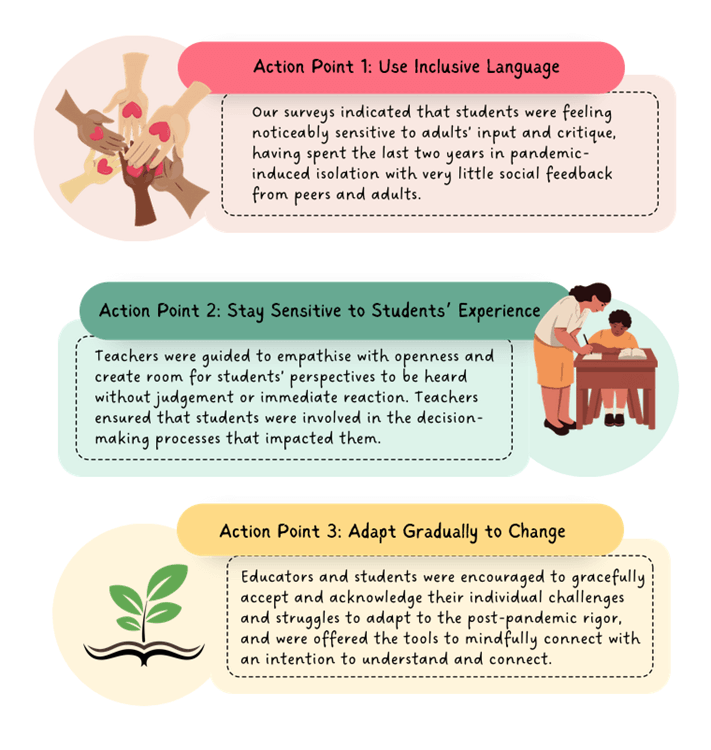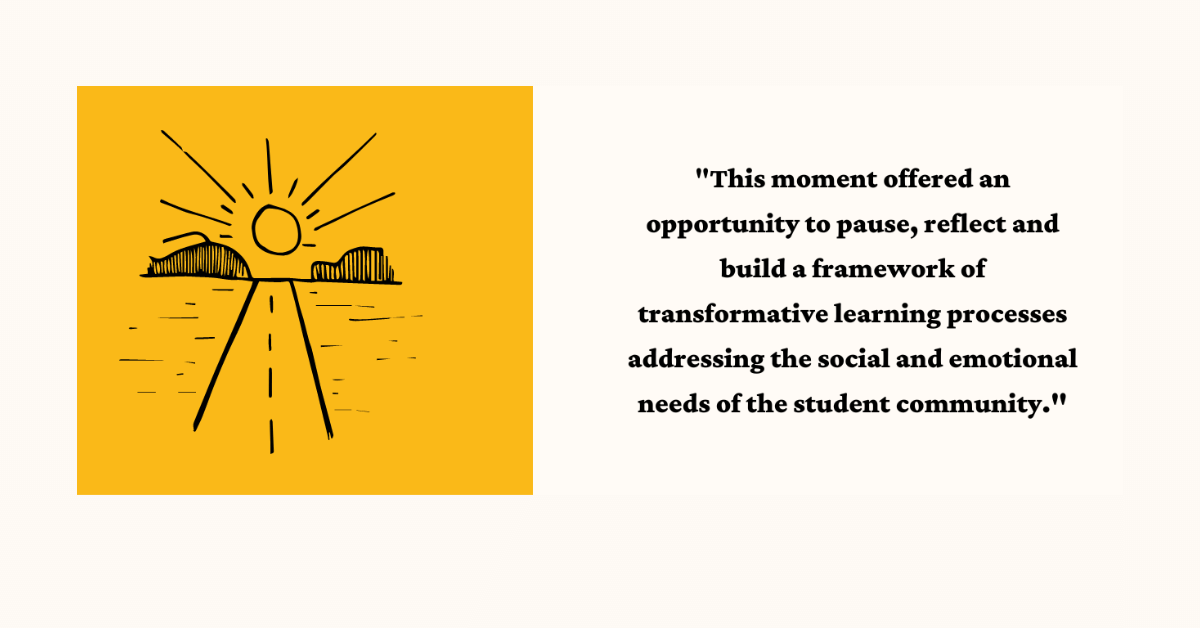March 2020: For the first time in history, schools take an unprecedented decision; to close their doors on the 1.5 billion students across the world. The chain of events that followed over the next two years tested the education systems’ readiness; in terms of accelerating their technology tools, and their capacity to maintain student engagement and quality education remotely. Policy makers and educators utilized myriad educational tools to provide a seamless teaching-learning experience to students.
March 2022: After a few months of staggered reopening schedules, CHIREC welcomes its cohort of four thousand students back to its campuses. Our team of school leaders, parents, and educators were aware of the layered impact of two years of school closure on students’ routines, learning, and health. We recognized that this moment offered an opportunity to pause and reflect on how to build a framework to co-create transformative learning processes that address the social and emotional learning losses experienced by the student community.
As we transition into the “post-pandemic world,” we are aware of the disruptive change imposed by the pandemic and co-creating a sustainable roadmap for collective flourishing. We are centering our plans and processes on using engaging, relevant, and contextually responsive instruction to develop a clearer understanding of how children and adolescents develop socially, physically, and academically.
School leaders have ensured that we take time to cultivate and deepen relationships and design opportunities where adults can connect, heal, and build their capacity to support students.
In the month of July, the school counsellor and SEL (Social and Emotional Learning) Head conducted a comprehensive one-to-one interaction with the senior secondary students. Our intention was to gain insight into student’s preparedness as they transitioned into the in-person school after two years. This open forum gave us an opportunity to talk about things that directly and indirectly influenced students’ academic rigor, classroom engagement, and motivation.
A few clear and tangible action points emerged through this exclusive action research:
- We identified that 70% of our students were facing challenges in settling in to the in-person school.
- There were noticeable shifts in their personal habits, social skills, ability to stay focused to pay attention, ability to plan and organize their time, unable to set and follow up on goals, and were facing frequent bouts of anxieties regarding academic assignments.
- Student responses indicated that post-pandemic, students were more sensitive to their social interactions with adults, were finding it difficult to adapt to the demands of the full-day school, were noticeably sleep deprived, and were more self-conscious among peers.
This interactive inquiry process helped us diagnose the underlying causes behind students’ concerns and we were able to strategically offer these clear solutions:

The roadmap ahead is being purposefully and thoughtfully designed, by integrating moments of reflection, positive interactions, and focused on building trust and positive relationships. Through our intentional practices, we are setting the tone to create safe, supportive, and equitable learning environments that promote all students’ social and emotional development.

Ms. Sumita Gowdety
Head of Social & Emotional Learning
I am an articulate communicator, empathetic listener, and passionate learner who has dedicated more than a decade’s research into building collaborative and transformative learning spaces for students that optimize their social and emotional skills for academic success, empower them to become conscientious and accountable decision makers, and create a roadmap for a thriving and fulfilling life. As Head of SEL Initiatives at CHIREC, my vision is to help build a culture of ethical mindfulness, purpose driven actions, empathetic relationships, resilience, and critical thinking in the fabric of the school climate and culture.
![CHIREC est1989 logo 2019[22] CHIREC est1989 logo 2019[22]](https://www.chirec.ac.in/wp-content/uploads/sites/15/2023/11/CHIREC-est1989-logo-201922.png)




